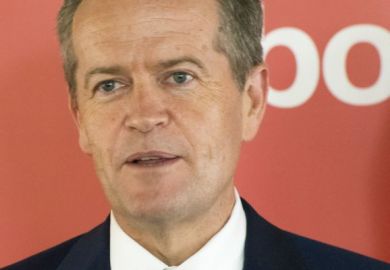In choosing a former US education secretary to head the nation’s biggest higher education system, the State University of New York is setting its sights on becoming leaner, wiser, more equitable and a lot better respected.
“We’ve got a tremendous asset” in the 64-campus system, SUNY’s newly named chancellor, John King, said in an interview outlining his plans for the 1.3 million-student behemoth with a reputation that has long lagged behind its size. A big part of the job now, Dr King said, was “to get the message out”.
“You think about what’s happening at Stony Brook or the University at Buffalo,” he said of SUNY’s two designated flagship campuses, “those should be mentioned in the same breath as UNC-Chapel Hill or UC-Berkeley.”
However, the top campuses of the SUNY system sit well to the rear of a long list of other public US universities in rankings by Times Higher Education and others, and Dr King readily admitted that some key improvements are needed at SUNY, and to some degree to his own style.
For the system, they include better curriculum alignment between SUNY’s campuses, easier pathways for students to move through them, greater racial equity in student performance, and much greater investments in top-level faculty. For himself, Dr King – remembered with some acrimony in New York from his past service as state education commissioner – confessed a need to listen better.
That realisation derived from his experiences as state commissioner and as US education secretary in the final year of the Obama administration. Both times, he struggled to implement controversial new rules setting minimum school performance standards. “As I reflect on that time period,” he said, the chief lesson “is just the importance of making sure that stakeholders are fully engaged and collaborating when you undertake a big-change initiative.”
Dr King certainly has some of those big changes in mind for SUNY and its mix of two-year and four-year institutions. He is due to begin the job this month, with New York’s governor, Kathleen Hochul, having already declared her hopes that SUNY can grow its undergraduate and postgraduate enrolment of 370,000 students to 500,000, despite having just contracted by 20 per cent over the past decade in a region of population declines.
Accompanying that decline, SUNY has two- and four-year campuses consolidating some of their functions to save money. SUNY Binghamton University and nearby Broome Community College are two leading examples, and Dr King said he stood ready to help others do the same.
The governor also called on Stony Brook and Buffalo to attract $1 billion (£800 million) apiece in annual federal research funding by 2030, more than double their existing levels.
The system has an annual budget of about $13 billion, with about $4 billion coming from the state. Much more is needed, Dr King acknowledged, for SUNY to hire the quality of faculty that could truly make it competitive with the likes of the University of North Carolina at Chapel Hill and the University of California, Berkeley.
SUNY, meanwhile, does reasonably well on student completion rates, mostly matching national averages. “But those aren’t where we need them to be,” especially when broken down by demographics, said Dr King, a graduate of Harvard, Columbia and Yale universities whose parents died before he was 12.
As an example, he noted that across SUNY’s community colleges – eyed as increasingly important feeders to the four-year campuses – the three-year graduation rate was 36 per cent for white students and just 15 per cent for black students. “So we have a lot of work to do to close those gaps,” he said.
A key tool in that regard is SUNY’s work to adopt the practices honed at such institutions as Georgia State University and City University of New York to strengthen advising and more closely guide students along their pathway to a degree. The tactic features technology-aided monitoring of students that leads to “just-in-time financial assistance” for those who face even a seemingly minor complication that could derail their progress.
SUNY’s Westchester Community College has been a leader in trying it, and it has seen significant gains in full-time enrolment and credit-earning within just a year, Dr King said. “So we think we’ve got a path to try to scale those kinds of supports,” he said.
And SUNY Oswego and SUNY’s Onondaga Community College are hopeful examples, Dr King said, of the system’s push to get those graduates jobs by working more closely with local employers. Ambitions at those campuses are driven by the computer memory producer Micron Technology and its promise to build a major new semiconductor fabrication facility that will bring an estimated 50,000 new jobs to the Syracuse area.
Micron should be a good test of SUNY’s ability to nurture such essential relationships, Dr King said. “We need more Microns – we want to attract more of those employer partners,” he said.
Register to continue
Why register?
- Registration is free and only takes a moment
- Once registered, you can read 3 articles a month
- Sign up for our newsletter
Subscribe
Or subscribe for unlimited access to:
- Unlimited access to news, views, insights & reviews
- Digital editions
- Digital access to THE’s university and college rankings analysis
Already registered or a current subscriber? Login







